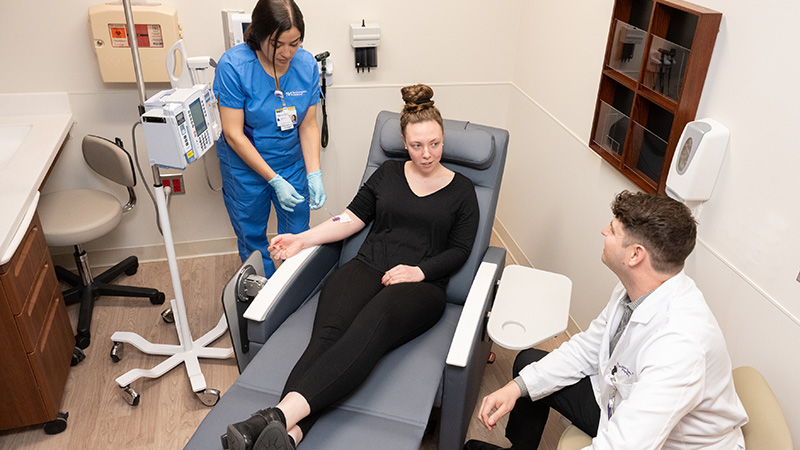Social Media and Youth Mental Health
Impact and Advice for Parents
Published October 2023
In May 2023, the U.S. Surgeon General released a warning on the impact of social media on teenagers.
Up to 95% of youth ages 13 to 17 report using social media.
- One third report using social media “almost constantly.”
- The average teen checks their phone more than 80 times per day.
- In 2021, 8th and 10th graders spent an average of three and a half hours per day on social media.
- On a typical weekend, one in three teens report using screens until midnight or later.
Your teens will model their phone use after you— Allison Kranich, MS, LCPC
The Impact of Social Media on Teen Mental Health
- Social media increases depression and anxiety rates
- A Pew Research Center survey found that 46% of teens in the U.S. have experienced abusive behaviors including cyberbullying and physical threats online, which can contribute to depression and anxiety.
In the book iGen: Why Today's Super-Connected Kids Are Growing Up Less Rebellious, More Tolerant, Less Happy and Completely Unprepared for Adulthood by Jean M. Twenge, PhD, published in 2017, the author reflects on research that suggests a range of social-media related trends, says Northwestern Medicine Professional Counselor Allison Kranich, MS, LCPC:
- Social media decreases socialization skills.
- Teens are meeting young adult milestones, such as getting their driver’s license, later in life than previous generations.
- They do not participate in in-person interactions as much, and they spend less time practicing oral communication skills (versus texting, typing)
- Social media causes sleep deprivation.
- Experts recommend that teens get nine hours of sleep per night, but 57% more teens experienced sleep deprivation in 2015 compared to 1991 due to social media use.
- Social media has a negative impact on academic performance.
- Standardized testing and reading scores have decreased nationwide since the mid-2000s when smartphone and social media use became prolific.
- Social media increases suicide risk factors.
- Teens spending more than three hours per day on electronics are 35% more likely to have at least one suicide risk factor, including feeling sad and hopeless for at least two weeks, seriously considering dying by suicide, planning suicide or attempting suicide.
“Young teens and middle schoolers are especially susceptible as identity forms during adolescence, which means your brain is more susceptible to social pressures, peer opinions and comparisons,” says Kranich. “Older teens are still at risk, but they are often more certain of their identities.”
Frequent social media use is also associated with changes in the developing teen brain, including:
- The amygdala, responsible for emotional learning and behavior
- The prefrontal cortex, responsible for impulse control, emotional regulation, executive functioning skills and social behaviors
- These systems are underdeveloped in adolescence as the brain does not reach peak maturity until around age 25. As a result, they are more sensitive to areas of social rejection and acceptance. Interactions via social media, especially those involving rejection, can lead to difficulties managing and navigating social relationships. Identity formation occurs during adolescence, including feelings of self-worth. This process is negatively impacted when teens perceive rejection online or frequently compare themselves to others via social media.
- The reward center of the brain, or the dopamine pathway.
- Dopamine is released in the brain when humans engage in enjoyable activities. When social media is teens' main source of enjoyment, over time it impacts the neural pathways involved in rewards and they no longer want typical sources of pleasure (for example in-person interactions). This is why teens who spend a lot of time on social media report a lack of enjoyment in non-screen activities.
What Parents Can Do
- Prioritize in-person interactions.
- Put off giving your teen a phone and social media privileges for as long as possible.
- Set limits and expectations.
- Promote good phone habits.
- Be aware of the risks and benefits of different social media platforms.
- Model good behavior.
According to a study, teens who spend less time in front of screens are happier.
“Teens are not practicing face-to-face social skills as much anymore, which has implications for job interviews and even making friends in college,” says Kranich. “Put them in low-stakes scenarios where they can practice these skills.”
Consider a flip phone with limited functions if you need to communicate with your teen.
“Your child may say ‘everyone else is on social media,’ and ‘everyone else has a phone,’ but we know from research that teens will still have friends — and possibly more meaningful relationships — if they are not on social media,” says Kranich.
If you decide to give your teen permission to use social media, start by only allowing them to access their accounts from your devices, such as family computers or tablets.
“Don’t assume that your teen will be a responsible social media user — you have to teach them how to be one,” says Kranich. “Moderation is key.”
Limit screen time and social media use to an agreed-upon time period every day. According to Kranich, mental health risks start to increase with social media use greater than two hours per day, so keep this in mind as you set your teen’s limits. There are smartphone features available to help set time limits on app use.
Set expectations about honesty. For your teen’s safety, it’s important to consistently go through their phone with them. Do not allow your teen to use a smartphone or social media if you don’t know what they’re doing on it.
It’s also important to have conversations with your teen about phone use and driving to ensure that your teen practices safe phone use behind the wheel.
Don’t let your teen sleep with their phone in their room as it can disturb their sleep. Don’t allow phone use in certain areas and context, including at the dinner table.
When it comes to which social media platforms to let your child use, favor ones that allow brief and individual posts, like SnapChat, over permanent posts that can be viewed by a larger audience like Instagram.
“Posts intended for larger audiences can lead to careful curating of images and obsessing over the best picture and how many likes they’re getting,” says Kranich.
It’s also good to consider apps that use live video interaction, like HouseParty, Zoom and FaceTime so that your teen can see faces and emotional expressions in real time.
“Your teens will model their phone use after you,” says Kranich. “Teach them to be present by staying off of your phone and social media when you’re with them.”






